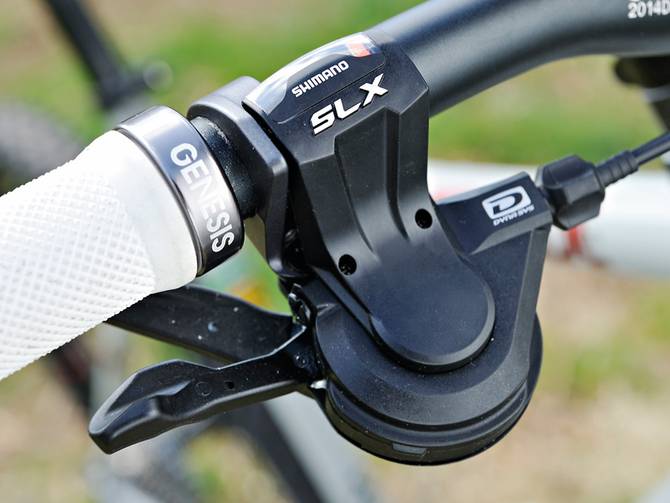Why Gear Shifting Matters for a Smooth Ride
Proper gear shifting is essential for a comfortable and efficient cycling experience. When done correctly, it can improve pedaling efficiency, reduce fatigue, and enhance overall performance. Whether you’re cruising on a flat road or tackling a steep hill, knowing how to change gears on a cycle can make all the difference. By mastering the art of gear shifting, cyclists can optimize their pedaling technique, conserve energy, and enjoy a more enjoyable ride. In this article, we’ll delve into the world of gear shifting and provide a comprehensive guide on how to change gears on a cycle like a pro.
Understanding Your Bike’s Gear System
A bike’s gear system is a complex mechanism that enables cyclists to shift gears smoothly and efficiently. At its core, the system consists of three main components: gears, derailleurs, and shifters. The gears, typically located on the rear wheel and pedals, provide different gear ratios that allow cyclists to adjust their pedaling speed and effort. Derailleurs, which are mounted on the frame, guide the chain from one gear to another, ensuring a smooth transition. Shifters, located on the handlebars, enable cyclists to control the gear changes. When these components work together in harmony, cyclists can enjoy a seamless gear-shifting experience. Understanding how these components interact is crucial for mastering the art of gear shifting and knowing how to change gears on a cycle effectively.
How to Prepare for Gear Shifting
Before mastering the art of gear shifting, it’s essential to ensure a comfortable and efficient riding position. This can be achieved by adjusting the saddle height, handlebar position, and pedal stroke. A properly fitted bike can help reduce fatigue, improve pedaling efficiency, and enhance overall riding experience. To prepare for gear shifting, cyclists should start by adjusting the saddle height to allow for a slight bend in the knee when the pedal is in its lowest position. Next, the handlebar position should be adjusted to allow for a comfortable riding position, with the hands in a neutral position and the back straight. Finally, cyclists should focus on developing a smooth and efficient pedal stroke, with a circular motion that utilizes the muscles in the legs. By preparing in this way, cyclists can set themselves up for success when learning how to change gears on a cycle and shifting gears smoothly.
The Art of Shifting Gears: A Step-by-Step Guide
To master the art of gear shifting, cyclists need to understand how to use the shifters, when to shift, and how to adjust to different terrain and riding conditions. Here’s a step-by-step guide on how to change gears on a cycle smoothly:
Step 1: Familiarize yourself with the shifters. Most bikes have two shifters, one for the front derailleur and one for the rear derailleur. The front shifter controls the chainrings, while the rear shifter controls the cassette.
Step 2: Learn when to shift. Shift gears when you need to adjust your pedaling speed or effort. For example, shift to an easier gear when approaching a hill or when you need more speed.
Step 3: Use the correct shifting technique. To shift gears, push the shifter with your thumb or finger, depending on the type of shifter. Use a gentle, smooth motion to avoid sudden jerks or jumps.
Step 4: Adjust to different terrain and riding conditions. For example, shift to a lower gear when riding uphill or on rough terrain, and shift to a higher gear when riding downhill or on smooth terrain.
By following these steps and practicing regularly, cyclists can master the art of gear shifting and enjoy a more efficient and enjoyable ride. Remember, the key to smooth gear shifting is to use the correct technique, shift at the right time, and adjust to different terrain and riding conditions.
Common Mistakes to Avoid When Shifting Gears
When learning how to change gears on a cycle, it’s essential to avoid common mistakes that can lead to inefficient pedaling, fatigue, and even damage to the bike’s gear system. Here are some common mistakes to avoid:
Shifting too quickly: Avoid shifting gears too quickly, as this can cause the chain to jump or skip gears, leading to inefficient pedaling and potential damage to the gear system.
Shifting under heavy load: Avoid shifting gears when pedaling under heavy load, as this can cause the chain to break or the gear system to malfunction.
Not adjusting to terrain: Failing to adjust gear shifting techniques to different terrain and riding conditions can lead to inefficient pedaling and fatigue.
Not using the correct gear: Using the wrong gear for the terrain or riding conditions can lead to inefficient pedaling and fatigue.
By avoiding these common mistakes, cyclists can ensure a smooth and efficient ride, and prolong the life of their bike’s gear system. Remember, practice makes perfect, so be sure to practice gear shifting techniques regularly to master the art of how to change gears on a cycle.
Practice Makes Perfect: Tips for Improving Your Gear Shifting Skills
To master the art of gear shifting, it’s essential to practice regularly and incorporate drills and exercises into your training routine. Here are some tips to help you improve your gear shifting skills:
Start with short practice sessions: Begin with short practice sessions, such as 10-15 minutes, to focus on shifting gears smoothly and efficiently.
Practice shifting on different terrain: Practice shifting gears on different terrain, such as hills, flats, and rough roads, to adapt to varying conditions.
Use drills to improve technique: Use drills, such as shifting gears in a specific sequence or at specific intervals, to improve your technique and build muscle memory.
Incorporate strength training: Incorporate strength training exercises, such as leg press and calf raises, to improve your pedaling power and efficiency.
Practice how to change gears on a cycle in different riding positions: Practice shifting gears in different riding positions, such as standing or seated, to improve your overall riding efficiency.
Join a cycling group or club: Join a cycling group or club to ride with experienced cyclists and learn new techniques and strategies for improving your gear shifting skills.
By incorporating these tips into your training routine, you can improve your gear shifting skills and master the art of how to change gears on a cycle. Remember, practice makes perfect, so be sure to practice regularly to see improvement.
Gear Shifting for Different Types of Riding
While the basics of gear shifting remain the same, different types of riding require adaptations to gear shifting techniques. Here’s how to adjust your gear shifting for various types of riding:
Mountain Biking: When mountain biking, it’s essential to use lower gears to tackle steep inclines and technical terrain. Practice how to change gears on a cycle quickly and smoothly to maintain momentum and control.
Road Cycling: Road cycling requires a focus on efficiency and speed. Use higher gears to maintain a fast pace, and practice shifting gears smoothly to avoid losing momentum.
Commuting: Commuting often involves riding in heavy traffic and navigating through urban terrain. Practice shifting gears quickly and smoothly to adapt to changing traffic conditions and road surfaces.
Recreational Riding: Recreational riding is all about enjoying the ride. Practice shifting gears smoothly to maintain a comfortable pace and enjoy the scenery.
Regardless of the type of riding, it’s essential to practice gear shifting regularly to develop muscle memory and improve your overall riding efficiency. By adapting your gear shifting techniques to different types of riding, you can ensure a more enjoyable and efficient ride.
Conclusion: Mastering Gear Shifting for a More Enjoyable Ride
In conclusion, mastering the art of gear shifting is essential for a smooth, efficient, and enjoyable ride. By understanding the basics of a bike’s gear system, preparing for gear shifting, and practicing smooth gear changes, cyclists can improve pedaling efficiency, reduce fatigue, and enhance their overall riding experience.
Remember, how to change gears on a cycle is a skill that requires practice and patience. By avoiding common mistakes, adapting to different types of riding, and incorporating drills and exercises into your training routine, you can master the art of gear shifting and take your cycling to the next level.
So, get out there and start practicing With time and effort, you’ll be shifting gears like a pro and enjoying a more efficient and enjoyable ride. Whether you’re a seasoned cyclist or just starting out, mastering the art of gear shifting is a skill that will benefit you for years to come.







